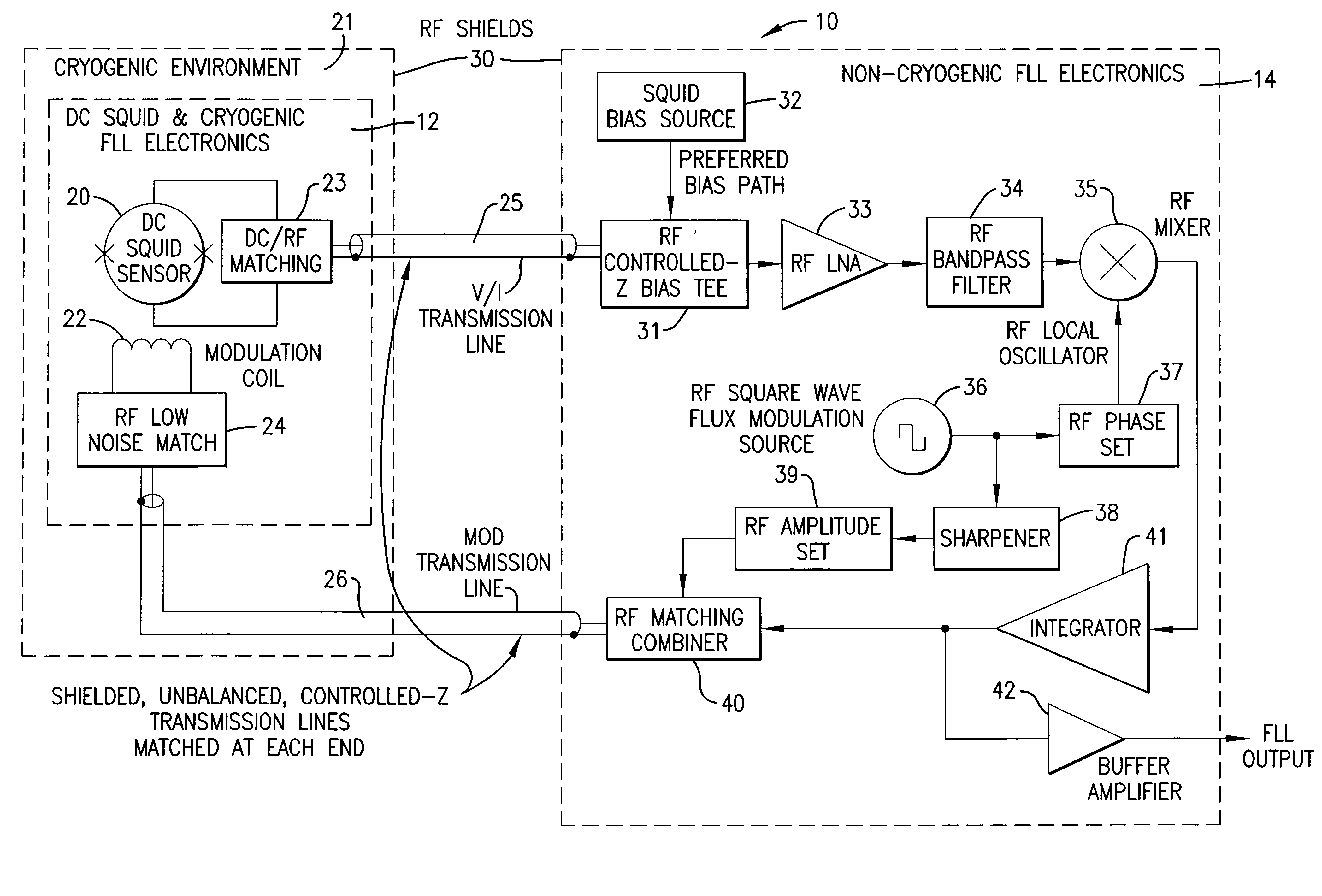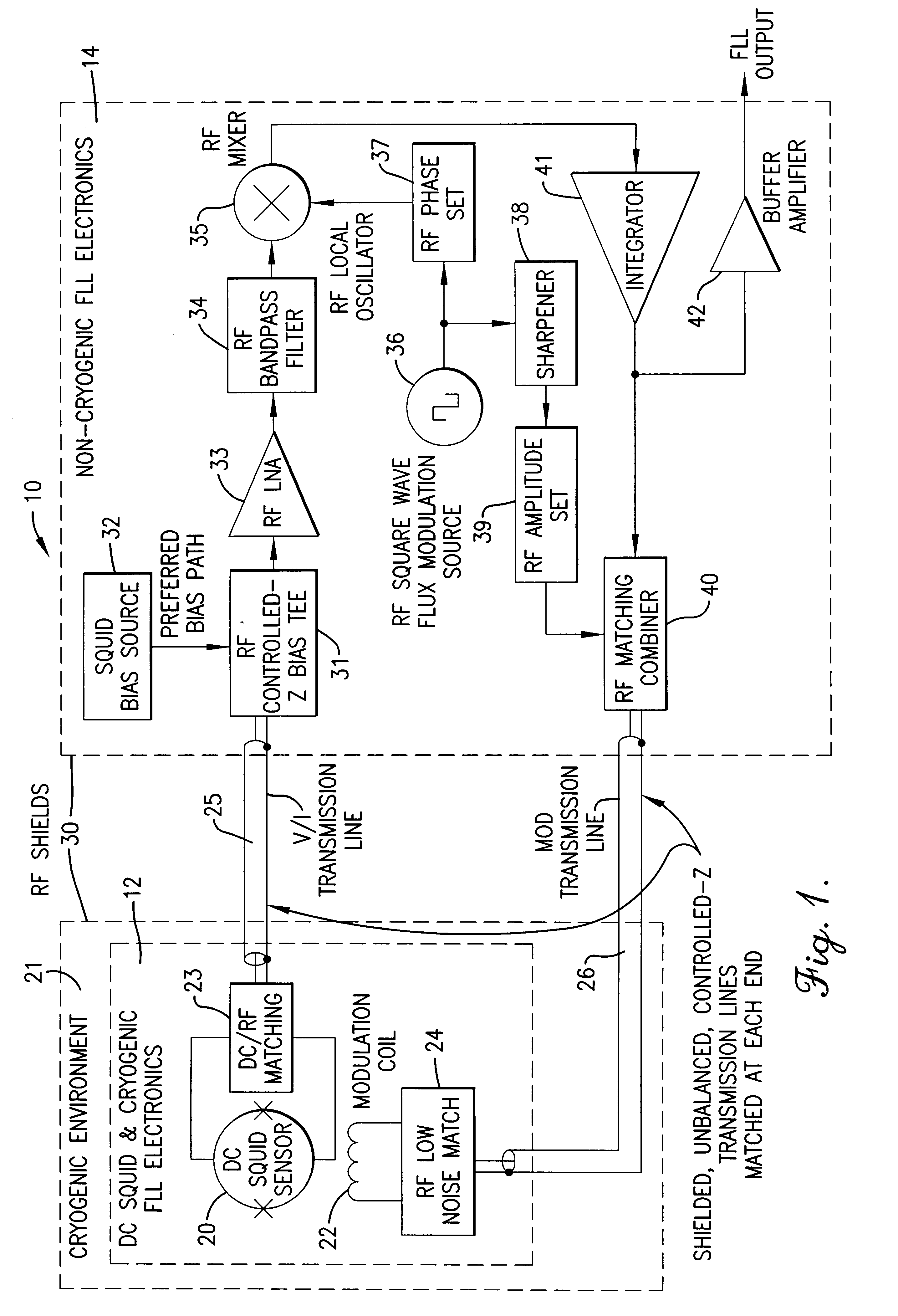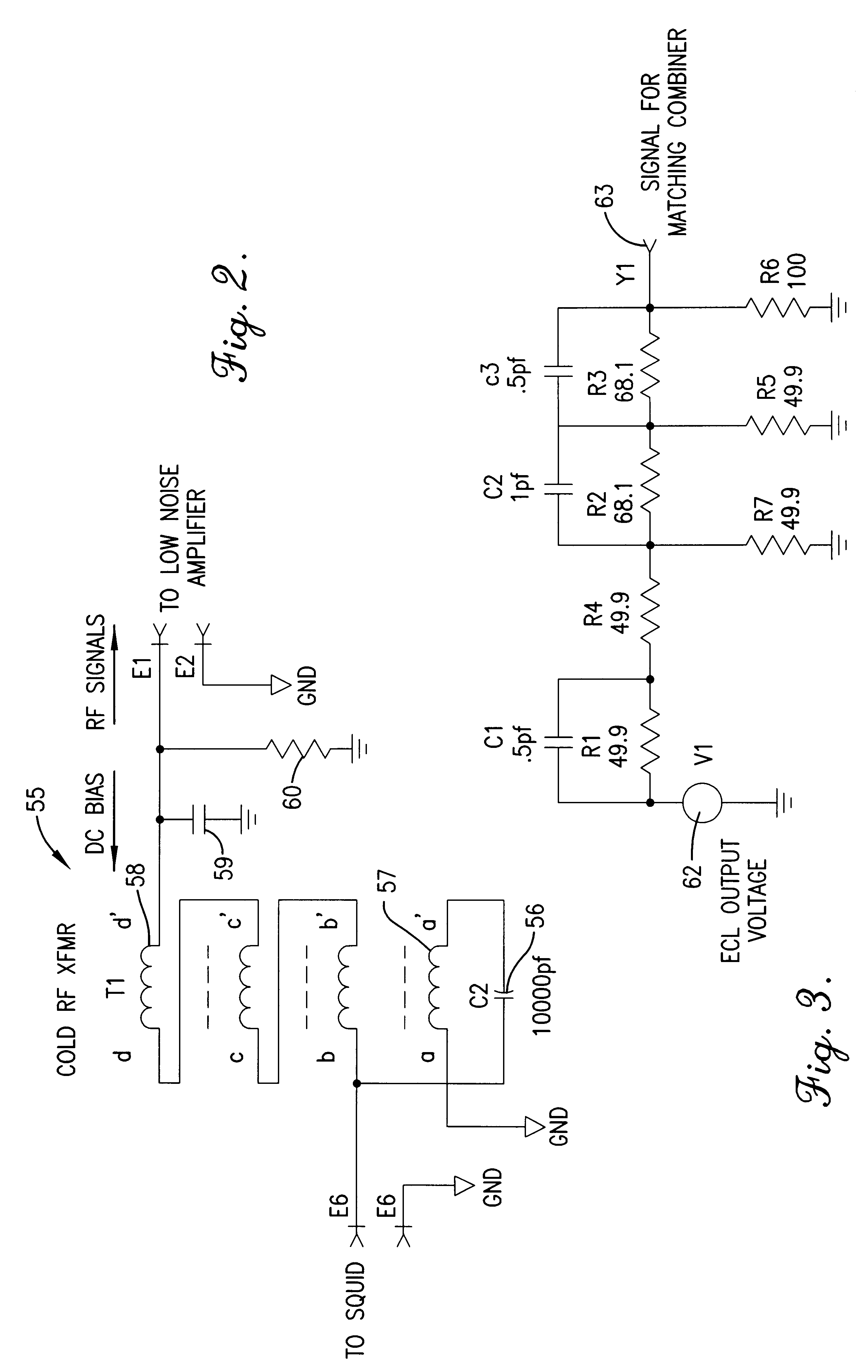Fast flux locked loop
a fast flux and lock loop technology, applied in pulse technique, magnetic field measurement using superconductive devices, instruments, etc., can solve the problems of inability to use dc squid sensor systems for non-destructive testing/evaluation or biomagnetic measurement in a field setting, loss of lock lock, measurement in progress invalidation, etc., to improve system noise performance, reduce effective amplifier input noise, and improve control loop stability
- Summary
- Abstract
- Description
- Claims
- Application Information
AI Technical Summary
Benefits of technology
Problems solved by technology
Method used
Image
Examples
Embodiment Construction
, below.
A preferred embodiment of the present invention is described in detail below with reference to the attached drawing figures, wherein:
FIG. 1 is a block diagram illustrating a flux locked loop constructed in accordance with a preferred embodiment of the present invention.
FIG. 2 is a circuit schematic illustrating a preferred embodiment of the cold RF transformer component of the present invention.
FIG. 3 is a circuit diagram illustrating a preferred embodiment of the sharpener circuit of the present invention.
Referring to FIG. 1, a DC SQUID flux locked loop feedback system 10 is shown comprising a DC SQUID with cryogenic flux locked loop electronics 12 and non-cryogenic flux locked loop electronics 14. Such a DC SQUID feedback system 10 is a major component of read-out electronics for. a DC SQUID magnetic measurement system, as described and shown in the copending patent application entitled "Read-Out Electronics for DC SQUID Magnetic Measurements", Ser. No. 09 / 596,190, filed J...
PUM
 Login to View More
Login to View More Abstract
Description
Claims
Application Information
 Login to View More
Login to View More - R&D
- Intellectual Property
- Life Sciences
- Materials
- Tech Scout
- Unparalleled Data Quality
- Higher Quality Content
- 60% Fewer Hallucinations
Browse by: Latest US Patents, China's latest patents, Technical Efficacy Thesaurus, Application Domain, Technology Topic, Popular Technical Reports.
© 2025 PatSnap. All rights reserved.Legal|Privacy policy|Modern Slavery Act Transparency Statement|Sitemap|About US| Contact US: help@patsnap.com



